#alicja dobrucka
Explore tagged Tumblr posts
Text
THE KIOSK OF DEMOCRACY PRESENTS "I like you, I like you a lot" A series "I like you, I like you a lot is a personal work, about family and the experience of death and mourning." By Alicja Dobrucka - United Kingdom https://www.facebook.com/kioskofdemocracy
Alicja Dobrucka ©
0 notes
Photo

---> Ses ruminations intérieures avaient été interrompues.
> Proposition visuelle d'écriture > Photographie de Alicja Dobrucka
#Alicja Dobrucka#proposition visuelle d'écriture#proposition d'écriture#atelier d'écriture#écrire#écriture#visual writing prompt#writing prompts#creative writing
1 note
·
View note
Photo

Gespräche über Polnische Fotografie
Jens Pepper, German journalist, in this book brings together thirty very personal conversations with the most important Polish photographers, artists, gallerists, publishers, collectors and curators of recent years.
Interviewees: Krzysztof Candrowicz, Wiktor Dabkowski, Jacek Dehnel, Agnieszka Dwernicka, Alicja Dobrucka, Aleksandra Fedorowicz-Jackowska, Krzysztof Gieraltowski, Lukasz Gorczyca, Aneta Grzeszykowska, Pawel Jaszczuk, Ryszard Horowitz, Magda Hueckel, Grzegorz Kosmala, Zuza Krajewska, georgia Krawiec, Rafal Lewandowski, Rafal Lochowski, Adam Mazur, Katarzyna Mazur, Rafal Milach, Chris Niedenthal, Karolina Puchala-Rojek, Katarzyna Sagatowska, Grazyna Siedlecka, Tomek Sikora, Michal Szlaga, Ilona Szwarc, Marta Szymanska, Wiktoria Wojciechowska, Janek Zamoyski, Pawel Zak
booked published by KLAG VERLAG, Germany, 2017. Soft cover, 318 pages, format 23 x 15,5, ISBN 978-3-943767-39-1
Read more: https://www.klakverlag.de/2017/09/02/gespräche-über-polnische-fotografie-jens-pepper-in-der-collection-regard/
#others#jens pepper#interviews#polish photography#grazyna siedlecka#book#publication#poland#german#krzysztof candrowicz#wiktor dabkowski#jacek dehnel#agnieszka dwernicka#alicja dobrucka#luksz gorczyca#aneta grzeszykowska#pawel jaszczuk#ryszard horowitz#magda hueckel#grzegorz kosmala#zuza krajewska#georgia krawiec#rafal lewandowski#rafal lochowski#adam mazur#katarzyna mazur#rafal milach#christ niedenthal#karolina puchala rojek#katarzyna sagatowska
2 notes
·
View notes
Text
FOMA 28: Infrastructural Scars
The impact that geopolitics has on our natural and built environment is enormous. In times of concentration of power and wealth, or in moments of major crisis, massive infrastructural projects have often been chosen as the way to project dominance and power over people and nature.

A sinking bunker on an Albanian beach. | Photo by © Alicja Dobrucka
One current example of such a piece of infrastructure is the Mexico-United States barrier which has been proposed by President Trump to become a heavily fortified border wall. A massive investment of 25 billion dollars which has been proven to be easily surpassable and not very effective.

A section of the border fence between Mexico and the U.S. in Mexicali, Baja California. | Photo © Guillermo Arias
These kinds of interventions are more often massive pieces of propaganda rather than an effective tool to achieve a specified goal. In this way they present a steep price to pay for someone’s personal masterpiece. The following are a collection of five arrogant projects which stand tall as monuments to the short-sightedness of their commissioners.

The World Archipelago represents all continents, Persian Gulf on February 5, 2009. | Photo © NASA by © Jesse Allen
The World Islands is an artificial archipelago constructed in the rough shape of a world map, located in the waters off the coast of Dubai. Construction of the 300 islands began in 2003, only to halt due to the 2008 financial crisis; even though 60 percent of the islands had been sold off to private contractors back in 2008, development on most of these islands has failed to initiate. As of late 2013, only two of the islands had been developed.

Islands are created by dredging sand from the coast. | Photo by © Elian Stefa

One of the two developed islands. | Photo © Creative Kingdom Dubai
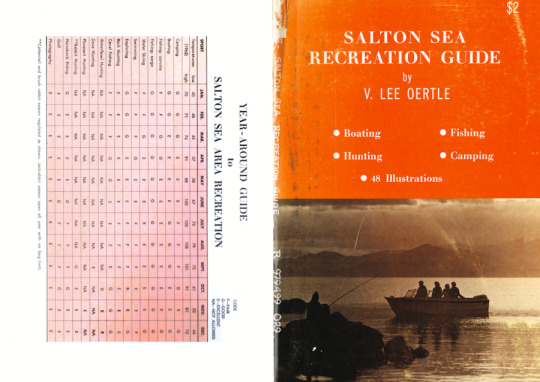
Often described as the only man-made mistake visible from space, the story of Salton sea dates back to the end of the late 1890s when a Californian developer decided to divert part of the Colorado River and bring water to the dry but fertile desert of the Imperial Valley. In June 1905, however, unusually strong floodwaters overwhelmed one of the channels and gushed into the valley. Bringing the flood under control took two years of work by 1,500 men, by which time the Salton sea, the largest inland body of water in California, had accidentally been created.
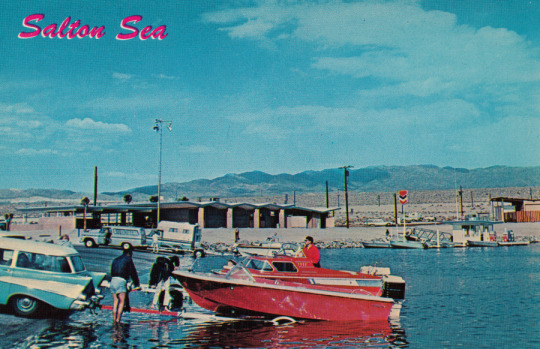
Postcards of the Salton sea exhibiting the leisurely activities available.
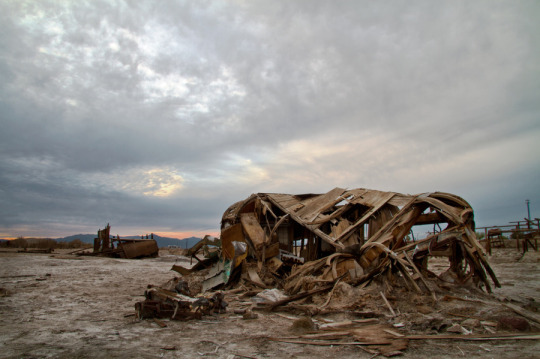
The current state of the Salton sea. | Photo via Public Domain
The Russian Woodpecker DUGA-1 was a soviet radar system operated from July 1976 to December 1989 near Chernobyl and Chernihiv in Ukraine. The DUGA system were extremely powerful, and appeared without warning, sounding like a sharp, repetitive tapping noise at 10 Hz worldwide, interfering with legitimate broadcasts, and much more.
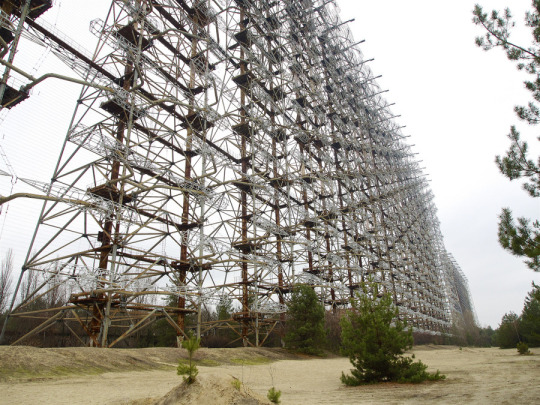
Soviet over-the-horizon (OTH) radar system. | Photo © Clay Gilliland
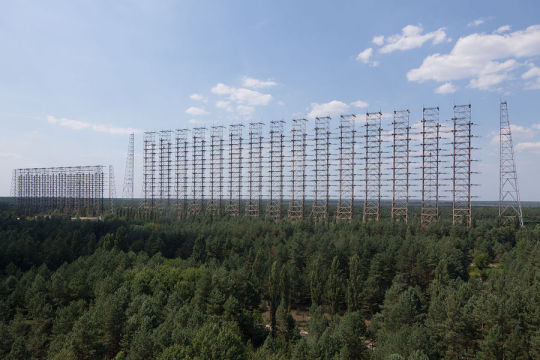
The systems were extremely powerful, over 10 MW in some cases, and broadcast in the shortwave radio bands. | Photo © Ingmar Runge
Albania’s bunkers are a ubiquitous sight in Albania, with a total of 173,371 bunkers constructed during the communist regime. While they were never used for their intended purpose, the cost of building them was a huge drain on Albania's resources, diverting them away from more pressing needs, such as dealing with the country's housing shortage and poor roads.

Untouched for decades, the bunker shields a tree. | Photo © Alicja Dobrucka

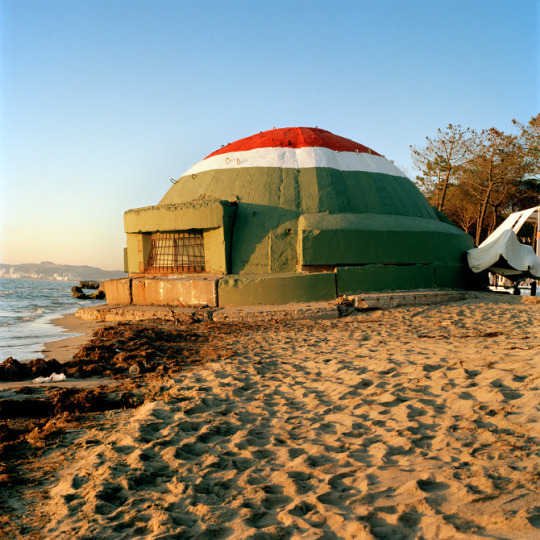
A bunker transformed into a seaside residence. | Photo © Alicja Dobrucka

Basilica of Yamoussoukro resembles St. Peter’s in Rome. | Photo via Wikimedia
Contrary to common belief, the world's largest Catholic church is to be found not in Rome but in Yamoussoukro, a small city in the war-torn African state of Côte d'Ivoire. The massive Basilica of Our Lady of Peace of Yamoussoukro, whose architecture is clearly inspired by the Basilica of St. Peter's in Rome, can comfortably seat 7,000 worshippers, but although Mass is celebrated regularly in the basilica, it is rarely filled to more than a minuscule fraction of its capacity.

The basilica in the surrounding context. | Photo via © Google Earth

The basilica in the surrounding context. | Photo via Public Domain
The case studies available here represent a sample of the research done for Utilitas Interrupta: An Infrastructural Index of Unfulfilled Ambitions curated by Joseph Grima, with associate curator Elian Stefa, for the EXD’11 Biennale. The Concrete Mushrooms project is composed of a book and a documentary film which focus on the reasons for building more than 750,000 bunkers throughout the country of Albania, and how the locals now coexist with them by repurposing them. The bunkers were never used for their intended purpose but have instead become a symbol of the Albanian landscape, often being transformed into chicken coops, silos, hotels, and tattoo parlours.
vimeo
---
#FOMA 28: Elian Stefa
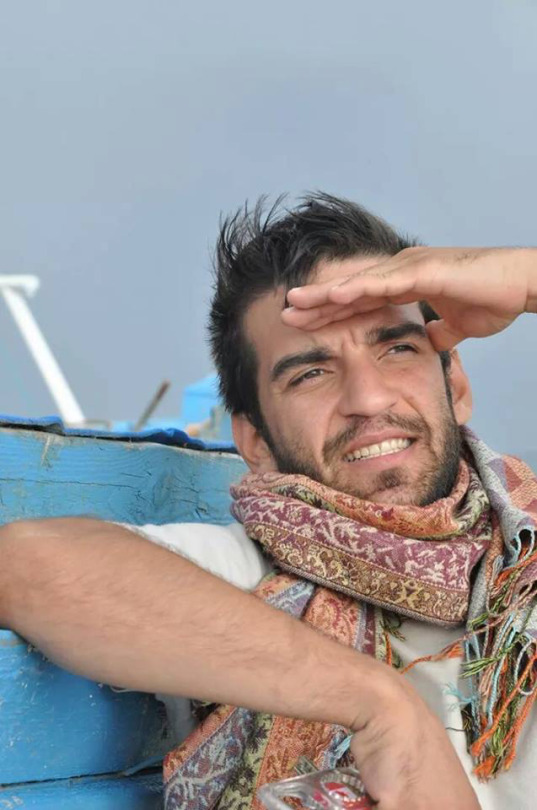
Elian Stefa (1985) is a Tirana based architect and curator. His work focuses on exploring ambiguous territories, revitalisation of abandoned spaces, and collaborative design. Recently he has been selected to join the fourth cycle of the Future Architecture Platform 2019 with ARTiLERIA: Reawakening Sazan. Previously he has participated at the Albanian Pavilion at the 13th Architecture Venice Biennale with Concrete Mushrooms, a project which transforms Albania’s 750,000 bunkers into tourist attractions, demystifying the communist territorial legacy in Albania published by dpr-barcelona. Other notable pojects include acting as Associate Curator and General Coordinator of ‘Adhocracy’, exhibited at the 1st Istanbul Design Biennial, the New Museum NYC, and Lime Wharf London; and exhibitions at La Triennale di Milano, the EXD’11 Lisbon Biennale, Stazione Futuro at the Officine Grandi Riparazioni of Torino, the Helsinki Museum of Cultures, Strelka Institute, and the Harvard GSD.
362 notes
·
View notes
Text
Photographer Alicja Dobrucka documents tragedy and Polish identity in new book
Alicja Dobrucka’s deeply personal and emotive photographic series I Like You I Like You A Lot is to be published by new London imprint Kali. The project began in 2008, when Polish-born Alicja discovered her 13-year-old brother Maks had tragically drowned. On her visits home, the photographer documented the sequence of events in the aftermath and the family’s grief, saying she used her camera as a “protecting shield” from the brutal reality of a helpless situation.
Read more
from It's Nice That http://ift.tt/2iDMwwY via IFTTT
0 notes
Text
Ben Murphy photographs makeshift architecture in the mountains of southeast Spain
Photographer Ben Murphy has spent the last decade documenting the temporary dwellings created by multi-cultural nomads living in rural southeast Spain.
His series called The Riverbed reveals the variety of homes created by these counter-cultural communities, ranging from customised vans and trucks, to tents and timber-framed structures.
For instance, one shot shows a shelter with straw bales for walls and a canopy roof, but also a typical front door. Another shows a vehicle containing a stove and other domestic furnishings.
"Distinct tribal identities exist here in hard-to-find places; along the banks of an infertile riverbed, in ravines and off mountain passes, in relative proximity to each other and in continual states of flux," said Murphy, who is based in London.
"People who reject and subvert the conventions of a structured society – from Europe, North and South America, Japan and elsewhere – gravitate to this area, making their temporal imprint on the land and local culture."
According to Murphy, the various tribes have their roots in many marginalised subcultural groups, from punks and hippies, to new-age travellers and anarchists.
But they have all migrated by choice to one remote mountainous region, rather than choosing to settle in towns or cities.
He believes there is a lot to learn from people who position themselves on the fringes of society, and particularly from the environments they create for themselves.
"The intention of the work is to reflect on contemporary counter-cultural identities through dwelling space," said Murphy.
"The work aims to consider values and expectations of home, society and notions of freedom, while drawing out some of the inevitable paradoxes, compromises and entanglements inherent in rejecting the dominant system."
Murphy will present The Riverbed in an exhibition at the Architectural Association gallery in London this spring. An exhibition of 21 analogue prints will be on show from 18 to 31 March and from 19 April to 27 May 2017.
Related story
Alicja Dobrucka photographs the seemingly temporary dwellings of a West Bank village
The post Ben Murphy photographs makeshift architecture in the mountains of southeast Spain appeared first on Dezeen.
from ifttt-furniture https://www.dezeen.com/2017/01/22/riverbed-photography-ben-murphy-makeshift-temporary-architecture-spain-mountains/
0 notes
Text
Ben Murphy photographs makeshift architecture in the mountains of southeast Spain
Photographer Ben Murphy has spent the last decade documenting the temporary dwellings created by multi-cultural nomads living in rural southeast Spain.
His series called The Riverbed reveals the variety of homes created by these counter-cultural communities, ranging from customised vans and trucks, to tents and timber-framed structures.
For instance, one shot shows a shelter with straw bales for walls and a canopy roof, but also a typical front door. Another shows a vehicle containing a stove and other domestic furnishings.
"Distinct tribal identities exist here in hard-to-find places; along the banks of an infertile riverbed, in ravines and off mountain passes, in relative proximity to each other and in continual states of flux," said Murphy, who is based in London.
"People who reject and subvert the conventions of a structured society – from Europe, North and South America, Japan and elsewhere – gravitate to this area, making their temporal imprint on the land and local culture."
According to Murphy, the various tribes have their roots in many marginalised subcultural groups, from punks and hippies, to new-age travellers and anarchists.
But they have all migrated by choice to one remote mountainous region, rather than choosing to settle in towns or cities.
He believes there is a lot to learn from people who position themselves on the fringes of society, and particularly from the environments they create for themselves.
"The intention of the work is to reflect on contemporary counter-cultural identities through dwelling space," said Murphy.
"The work aims to consider values and expectations of home, society and notions of freedom, while drawing out some of the inevitable paradoxes, compromises and entanglements inherent in rejecting the dominant system."
Murphy will present The Riverbed in an exhibition at the Architectural Association gallery in London this spring. An exhibition of 21 analogue prints will be on show from 18 to 31 March and from 19 April to 27 May 2017.
Related story
Alicja Dobrucka photographs the seemingly temporary dwellings of a West Bank village
The post Ben Murphy photographs makeshift architecture in the mountains of southeast Spain appeared first on Dezeen.
from RSSMix.com Mix ID 8217598 https://www.dezeen.com/2017/01/22/riverbed-photography-ben-murphy-makeshift-temporary-architecture-spain-mountains/
0 notes
Text
THE KIOSK OF DEMOCRACY PRESENTS "Houses (31°23′30.67″N 35°6′44.45″E)" A series "The series is a documentation of a Palestinian village called Susya. The houses (which there aren’t many of) are sturdy as they are made of bricks or concrete. However, they are made to look like temporary structures or tents in order to appear ephemeral and in flux. Here architecture appears as a symbol of resistance in the occupied Palestinian territories, disrupted by the constant construction of new settlements in spite of the fact that in the Palestinian territories land is already too scarce to live on comfortably." By Alicja Dobrucka - United Kingdom https://www.facebook.com/kioskofdemocracy
Alicja Dobrucka ©
0 notes
Photo


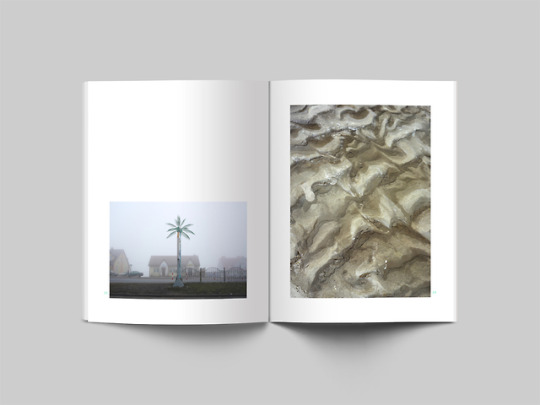
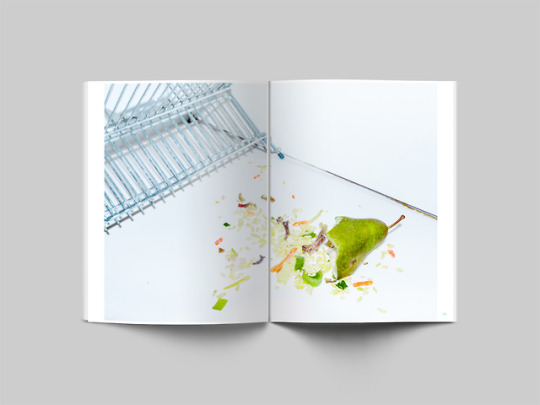
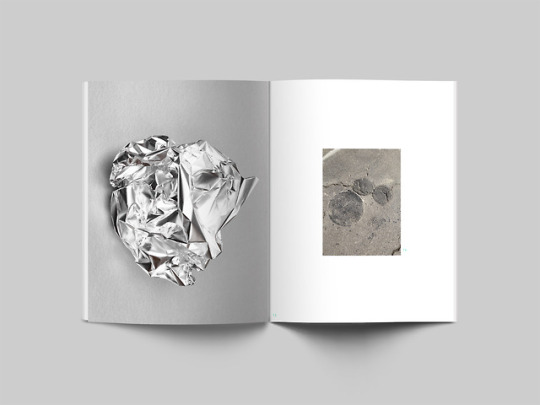


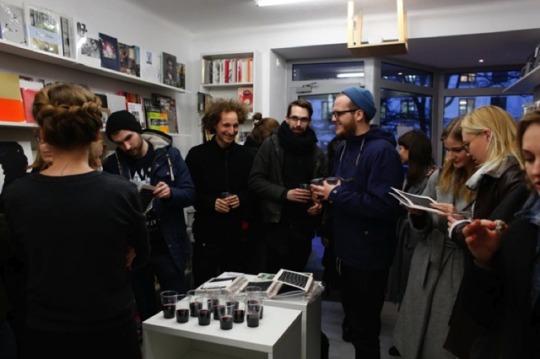
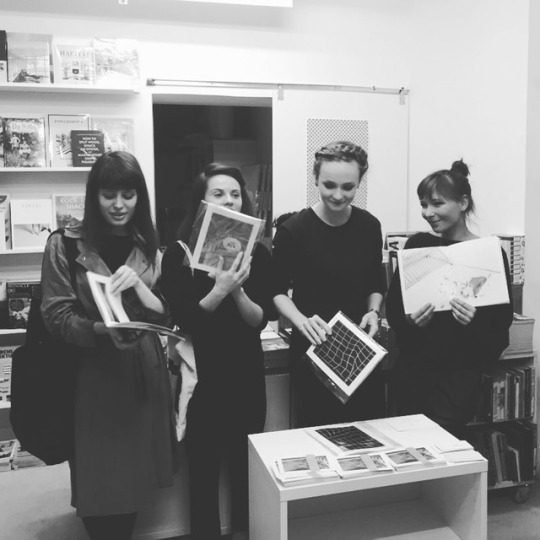
FFP ZINE #1 - DISTORTION
Edited by Grażyna Siedlecka & Monika Proniewska & Paulina Oknińska
Zine by Fresh From Poland, in collaboration with Hekla Studio
DISTORTION has been chosen as one of the 10 top photobooks of 2016 in Poland by Culture.pl (https://culture.pl/pl/artykul/rok-2016-najlepsze-ksiazki-fotograficzne).
Featured artists: Kamil I, Piotr Bekas, Filip Berendt, Magda Biernat, Jan Brykczyński, Grzegorz Czaplicki, Alicja Dobrucka, Anna Kieblesz, Kasia Klimpel, Wawrzyniec Kolbusz, Paulina Korobkiewicz, Gabriel Orłowski, Jerzy Piątek, Natalia Podgórska, Monika Proniewska, Ernest Protasiewicz, Ernest Wińczyk, Martyna Wyrzykowska, Karolina Zajączkowska / DWA ZETA
Printed in limited edition of 100; 48 pages, soft cover; April 2016. Launch in Super Salon bookshop, Warsaw - 31.03.2016
Read more:
https://freshfrompoland.com/zine
https://culture.pl/en/work/fresh-from-poland-zine-1-distortion
#distortion#zine#ffp#fresh from poland#grazyna siedlecka#monika proniewska#paulina okninska#publications#hekla studio#print#photobook#poland#polish photobook#kamil 1#filip berendt#magda biernat#jan brykczynski#grzegorz czaplicki#alicja dobrucka#anna kieblesz#kasia klimpel#wawrzyniec kolbusz#paulina korobkiewicz#gabriel orłowski#jerzy piatek#natalia podgorska#ernest protasiewicz#ernest winczyk#martyna wyrzykowska#karolina zajackzowska
0 notes
Text
From 2019 To 2020
Have a view of Architectuul’s highlights 2019 just before jumping into 2020!

The Bauhaus anniversary marked the 2019. | Photo © Ursula Mayer

Sonja Dragović, our Digital Research Fellow 2019 in collaboration with the Future Architecture program, developed new series Studio Visits, featuring a number of contemporary architectural collectives and studios from Lisbon and Porto, like Critical Concrete, Fahr 021.3 and Barbas Lopes Architects. Sonja spent one month of her fellowship with us in Berlin, as she is back in Lisbon more reports on visits to local practices will follow.

During our visit we got to know Critical Concrete pets. | Photo © Architectuul
In our monthly campaign Forgotten Masterpieces in 2019 ten curators shared their Forgotten Masterpieces from all over the world. We are excited what buildings will bring us 2020! If you have some Forgotten Masterpieces to share contact us and become the next FOMA curator!

Agios Dometios with divided island from FOMA 25. | Photo © Socrates Stratis

In the FOMA 28 Elian Stefa’s researched Albania. | Photo © Alicja Dobrucka

Castle Market from FOMA 26. | Photo © Ross Nesbitt

Housing Union Building (HUB) was part FIG Projects’ FOMA 33.
In 2019 we have published interviews with Nazlı Tümerdem about her Istanbul Walkabouts project, Ooze architects about their temporary art works and regional urban strategies and Tiago Mota Saraiva about their cooperative ateliermob’s social architecture.

Walking on the landscapes of power. | Photo © Nazlı Tümerdem

The excursion in the community of the Agua Carioca. | Photo © Rodrigo

Ateliermob constructed Sul Seller Amphitheater | Photo © Valter Vinagre
Photographers is a new campaign, which involves a new collaborative presentation of architectural photographers work in Architectuul’s community.

The Gulbenkian Museum in Lisbon. | Photo © Ricardo Oliveira Alves

The Unité d'Habitation by Le Corbusier in Marseille. | Photo © Roberto Conte

Monte Amiata Housing in Milan | Photo © Lorenzo Zandri
Architectuul was a media sponsor of the fifth edition of the Lisbon Architecture Triennale entitled The Poetics Of Reason, where Éric Lapierre developed an inclusive and expanded program based on theoretical and practical activities of educators and researchers together with the team members Sébastien Marot, Mariabruna Fabrizi, Fosco Lucarelli, Ambra Fabi, Giovanni Piovene, Laurent Esmilaire and Tristan Chadney.

La Chambre d'écoute (the listening room) by René Magritte (1958).
1 note
·
View note
Photo









Houses (31°23′30.67″N 35°6′44.45″E), Palestine, 2012-15 The series is a documentation of a Palestinian village called Susya. It was established in the 1830s, and a religious communal Israeli settlement under the jurisdiction of Har Hebron Regional Council was established in 1983. The Palestinian community has a population of 250 residents as of 2013. The Israeli settlement, on 1,800 dunams of land, had a population of 737 in 2006. Susya, whether it refers to the site of the synagogue or the ruins of the large ancient settlement of some 60 dunams (1 dunam =1000 m2), is not mentioned in any ancient text, and Jewish literature failed to register an ancient Jewish town on that site. Susya, as my guide told me, is the village famous for its resistance as it encourages all other villages in the area to stay in place. Here architecture appears as a symbol of resistance in the occupied Palestinian territories, disrupted by the constant construction of new settlements in spite of the fact that in the Palestinian territories land is already too scarce to live on comfortably. The houses (which there aren’t many of) are sturdy as they are made of bricks or concrete. However, they are made to look like temporary structures or tents in order to appear ephemeral and in flux. The land of the Palestinians ends where the house ends. It is dangerous for them to go out into the fields into the proximity of thesettlers. Children are frequently attacked on their way to school when passing near Israeli settlements. The environments of Palestinian houses are no-go areas, are non-spaces. Palestine has been continuously recorded from the very beginning of photography. In 1849, Maxime du Camp was one of the first to make a systematic photographic survey of monuments, ruins and landscapes in the middle east, including Palestine. Today the political question of the territory and how it is represented is more acute than ever, and photography brings a crucial contribution to an awareness of what it is to inhabit a contested and damaged landscape. When the painter Delacroix visited North Africa in 1832, he saw Greek and Roman Antiquity in the folds and drapery of the people's garments. He was seeing the classical past of art history in the present. To take pictures of these houses in Susya is akin to taking a portrait. The houses of Susya are covered with tarpaulin so that they are concealed from view. And the tarpaulins resemble drapery. These contemporary folds have a new currency: they have migrated from classical art to the present day of these Palestinians dwellings. Acting as camouflage in a zone of conflict, this contemporary form of drapery acquires now an unexpected political and subversive meaning.
Alicja Dobrucka
307 notes
·
View notes
Quote
The idea is to seem invisible and unnoticed. They want to stay in place but they don’t want to actively fight, so they take this route of being slightly unnoticed. Masking their architecture to look temporary is the path of least resistance.
Alicja Dobrucka in Meg Miller, “In West Bank, Architectural Trickery Is A Form Of Self-Defense,” Fast Company Design, June 10, 2016. Web. June 15, 2016.
#quote#home#House#houses#alicja dobrucka#fast company#fast co design#meg miller#west bank#israel#Architecture#cover#tarp
0 notes
Photo

Alicja Dobrucka Life is on a new high Affichage photographique dans la commune de Hombourg / Photography display in the commune of Hombourg / 4 juin-4 septembre / BPM 2016 / inauguration le 5 juin à 16h
Les photographies montrées dans la rue principale de Hombourg montrent la modification du paysage et la construction non contrôlée dans la capitale financière indienne Mumbai. Aujourd'hui la ville dénombre le plus grand nombre de super gratte-ciels et de tours en construction au monde. Les photographies des tours de l'extérieur qu’Alicja Dobrucka a réalisé entrent en dialogue avec un regard minutieux porté sur les images publicitaires d’intérieurs. Le gratte-ciel est devenu un moyen de s’élever physiquement et socialement au-dessus de la foule et du dédale des rues. La vue depuis ces super-gratte-ciel propose la fiction d'une ville qui peut être tenue à distance. La différence sociale est rendue visible à travers la réalité des logements dans des bidonvilles, mis en confrontation avec un idéal de modernité symbolisé par de futurs grattes-ciels de luxe. Alicja Dobrucka est diplômée en photographie du London College of Communication. L’année suivante elle reçoit un prix Fine Art Award and Grand de la Deutsche Bank. Elle a récemment exposé à la Tate Liverpool, à la Galerie MAG3 à Vienne, en Autriche et au Barbican à Londres.
///
The photographs on display in Hombourg show the changing landscape and uncontrolled construction in the Indian financial capital Mumbai. Today the city has the largest number of super skyscrapers and high-rise blocks under construction in the world. The photographs of the high-rise blocks outside that Alicja Dobrucka has taken establish a dialogue with a comprehensive look at the advertising images inside. Skyscrapers provide the means to rise physically and socially above the crowd and the maze of streets. The view from these super skyscrapers illustrates the fiction of a city that can be kept at arm’s length. The social difference is made apparent through the reality of the accommodation in shantytowns, confronted with a modern ideal symbolised by future luxury skyscrapers.
Alicja Dobrucka graduated in photography from the London College of Communication. The following year she was awarded the ‘Fine Art Award and Grant’ by Deutsche Bank. She recently exhibited at the Tate Liverpool, Galerie MAG3 in Vienna, Austria and at the Barbican in London.
1 note
·
View note
Photo

Fresh From Poland Krakow Takeover
Pauza, Kraków, 17-24.05.2015
slideshow exhibition as a part of Kraków Photo Fringe festival
curator: Katarzyna Roniek & Grażyna Siedlecka
event by Fresh From Poland
The debut event by Fresh From Poland - presentation of selected works by 57 young and talented Polish photographers.
The artists participating:
Franek Ammer, Karolina Bajda, Katarzyna Balicka, Ewa Behrens, Marta Berens, Łukasz Biederman, Marcel Borowski, Michał Brezinsky, Ola Bydlowska, Michał Bździuch, Agnieszka Chabros, Damian Chrobak, Justyna Chrobot, Jan Cieślikiewicz, Marta Cieślikowska, Ania Cywińska, Michał Czech, Piotr Czyż, Alicja Dobrucka, Darek Fortas, Jacek Fota, Karolina Grabowska, Kasia Gumpert, Karolina Jonderko, Dorotka Kaczmarek, Karolina Karwan, Anna Kieblesz, Kamila Kobierzyńska, Wawrzyniec Kolbusz, Magdalena Kulak, Marcin Kwiecień, Diana Lelonek, Krystian Lipiec, Mateusz Luzar, Monika Łopacka, Kuba Mozolewski, Gabriel Orłowski, Tatiana Pancewicz, Sylwia Paprzycka, Magdalena Lazar & Marcin Pazera, Oiko Petersen, Ewa Płonka, Natalia Podgórska, Natalia Poniatowska, Ernest Protasiewicz, Maciek Przemyk, Michał Sierakowski, Magdalena Świtek, Jacek Ura, Ola Walkow, Anna Wiącek, Ania Witkovska, Hubert Worobiej, Michał Woroniak, Piotr Zbierski, Marta Zgierska.
Read more: http://freshfrompoland.tumblr.com/post/118868061988/fresh-from-poland-krakow-takeover-youth
Cover photo by Ewa Behrens
#curating#grazyna siedlecka#fresh from poland#krakow fringe#festival#photography#exhibiiton#young polish photography#ffp#art#contemporary
2 notes
·
View notes
